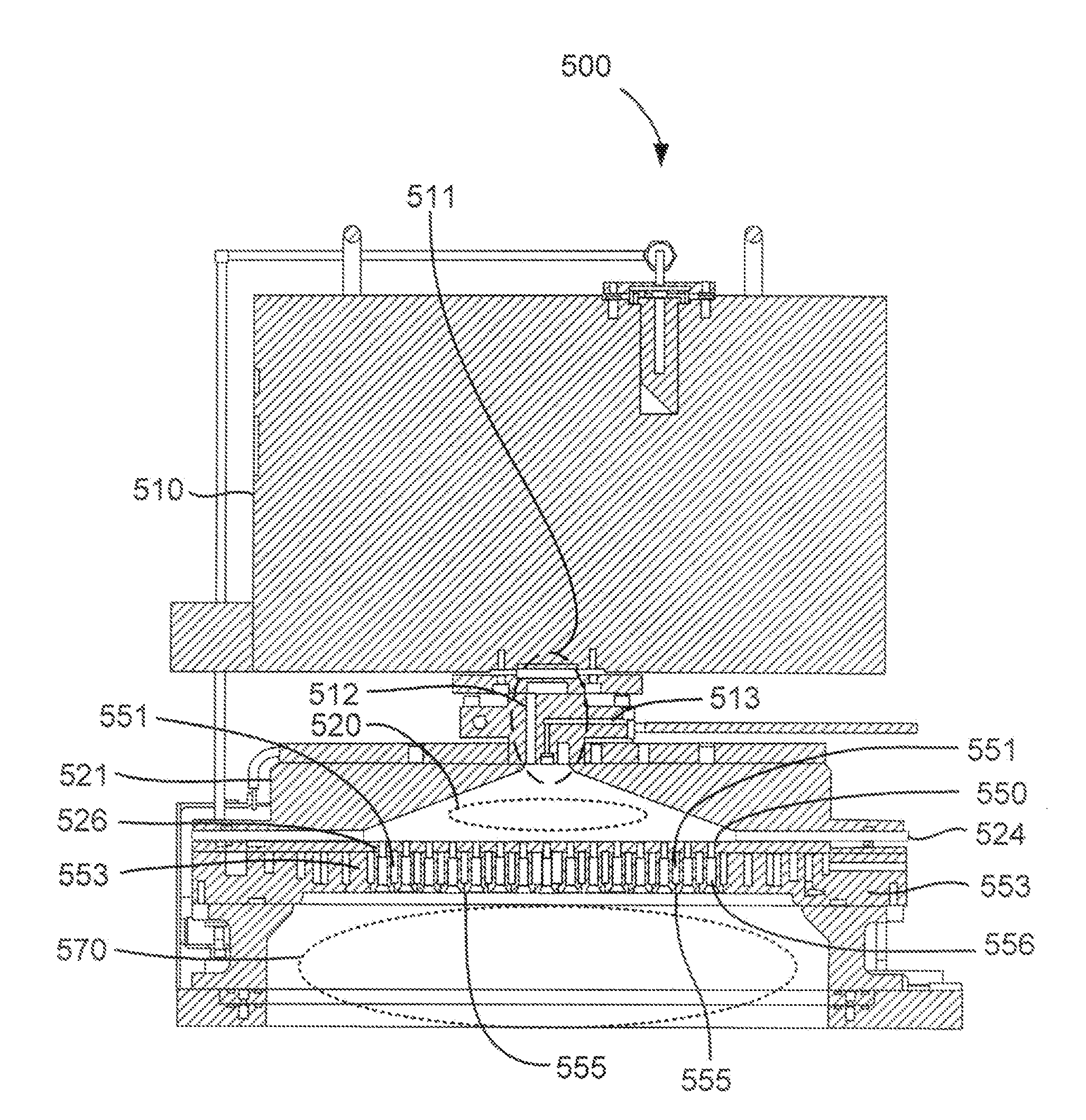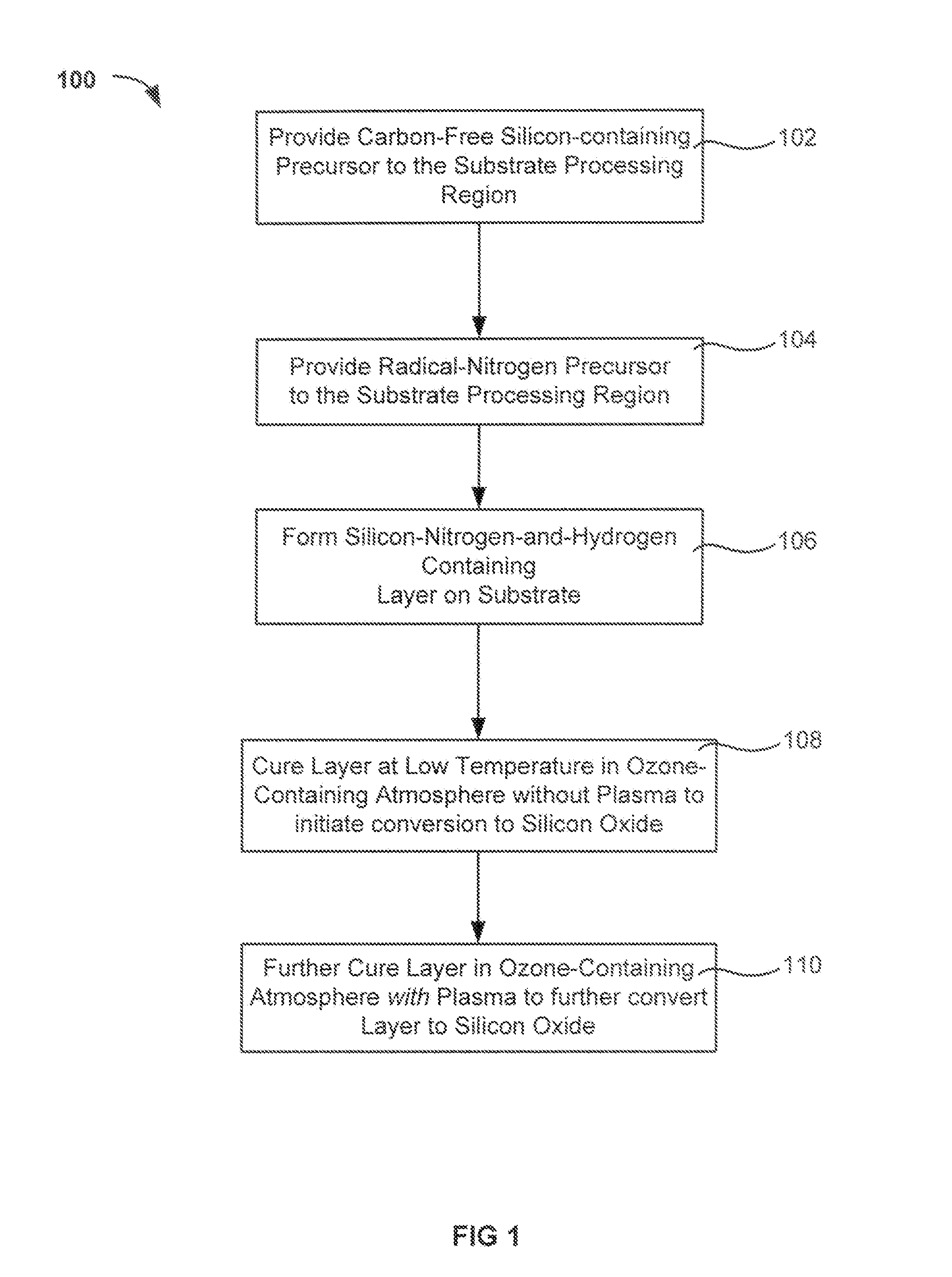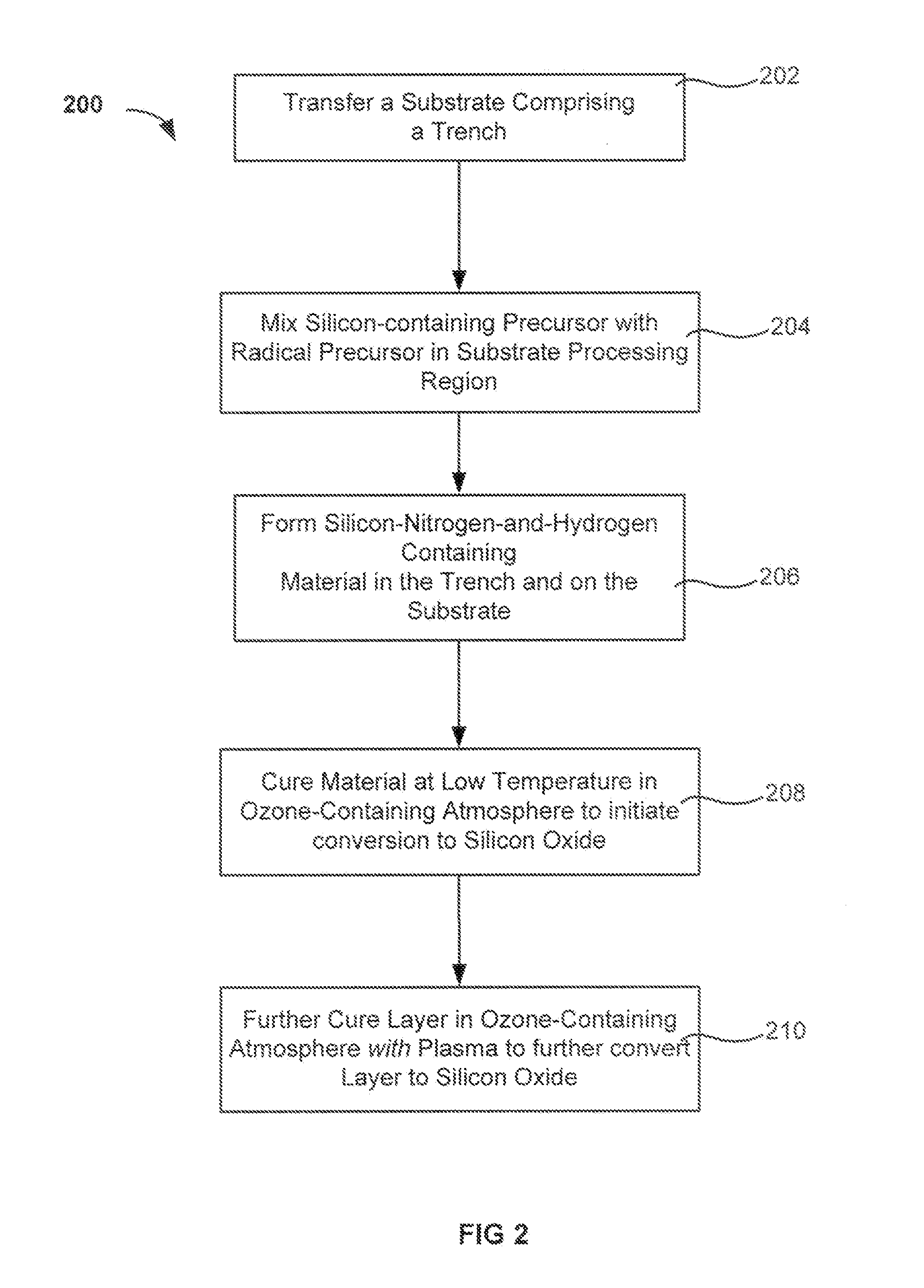Two-stage ozone cure for dielectric films
a dielectric film and ozone cure technology, applied in the direction of coatings, metallic material coating processes, chemical vapor deposition coatings, etc., can solve the problems of dielectric material, dielectric material, and structural features of the device having decreased spatial dimensions, so as to reduce or eliminate the effect of increasing the oxygen content of the dielectric layer
- Summary
- Abstract
- Description
- Claims
- Application Information
AI Technical Summary
Benefits of technology
Problems solved by technology
Method used
Image
Examples
Embodiment Construction
[0016]A method of forming a silicon oxide layer is described. The method increases the oxygen content of a dielectric layer by curing the layer in a two-step ozone cure. The first step involves exposing the dielectric layer to ozone while the second step involves exposing the dielectric layer to ozone excited by a local plasma. This sequence can reduce or eliminate the need for a subsequent anneal following the cure step. The two-step ozone cures may be applied to silicon-and-nitrogen-containing film to convert the films to silicon oxide.
[0017]Without binding the coverage of the claims to hypothetical mechanisms which may or may not be entirely correct, a discussion of some details may prove beneficial. Exposing an as-deposited silicon-and-nitrogen-containing film to ozone first and then exposing it to plasma-excited ozone improves the conversion of the film to silicon oxide over performing either step alone. This may result from the relatively open network produced by depositions o...
PUM
| Property | Measurement | Unit |
|---|---|---|
| temperature | aaaaa | aaaaa |
| temperature | aaaaa | aaaaa |
| temperature | aaaaa | aaaaa |
Abstract
Description
Claims
Application Information
 Login to View More
Login to View More - R&D
- Intellectual Property
- Life Sciences
- Materials
- Tech Scout
- Unparalleled Data Quality
- Higher Quality Content
- 60% Fewer Hallucinations
Browse by: Latest US Patents, China's latest patents, Technical Efficacy Thesaurus, Application Domain, Technology Topic, Popular Technical Reports.
© 2025 PatSnap. All rights reserved.Legal|Privacy policy|Modern Slavery Act Transparency Statement|Sitemap|About US| Contact US: help@patsnap.com



